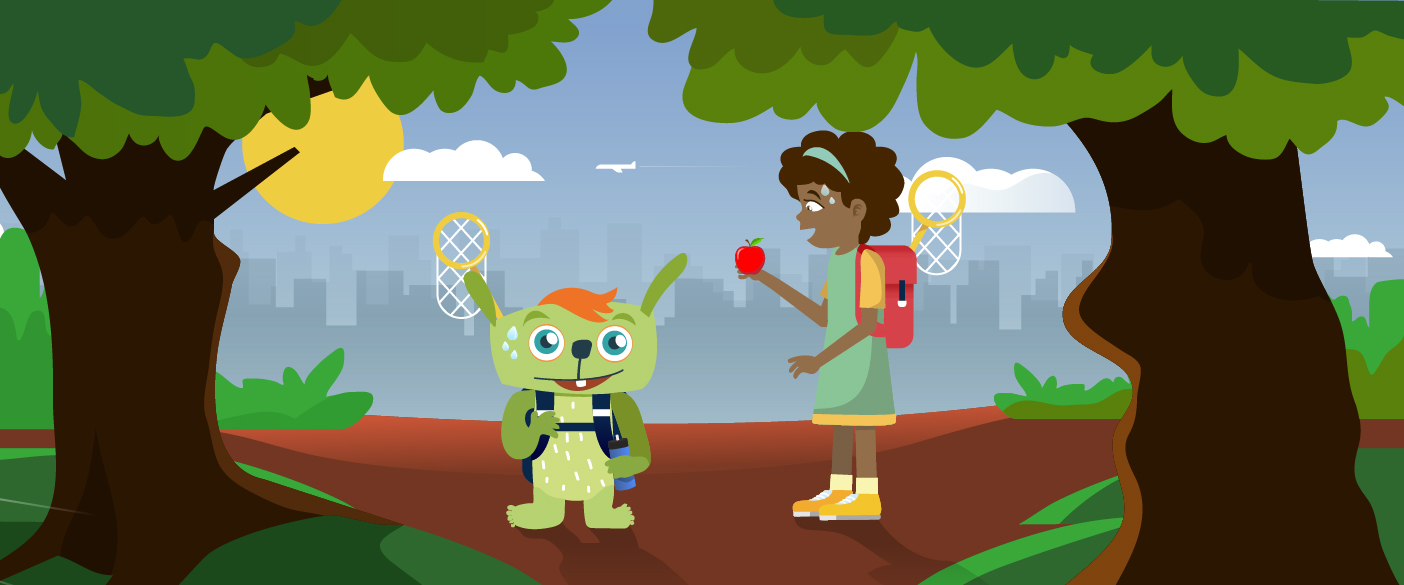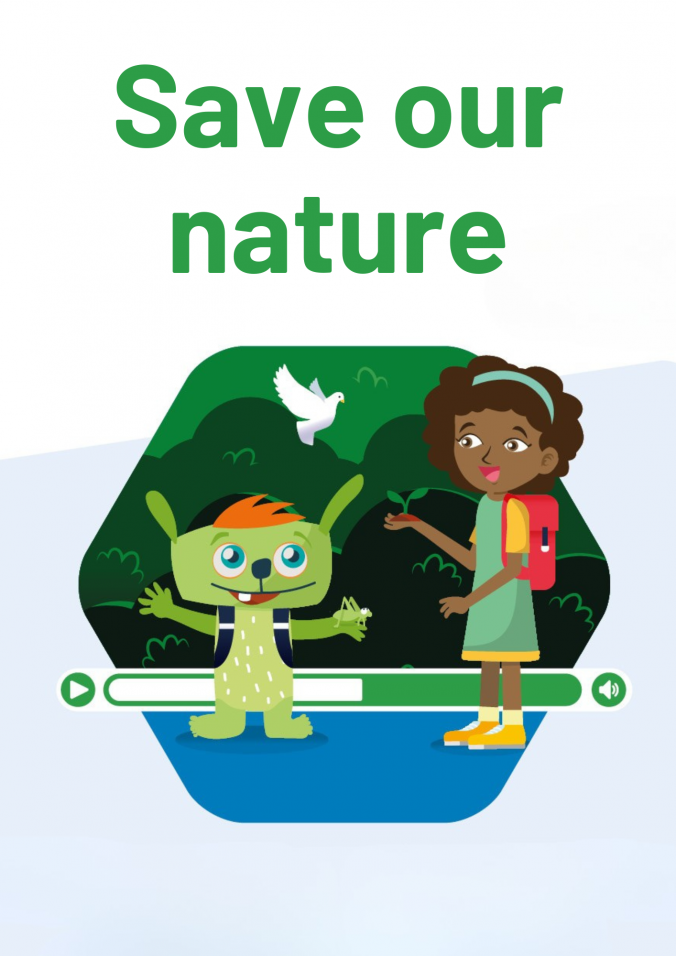How does the Melting of Sea Ice or Land Ice affect the Sea Level?

Overview
Overview
Keywords: temperature, water, ice, sea level rise, sea ice, land ice, states of matter, changes of state
Subjects: science, physics, mathematics, geography
Age group: 6-10 years old
Difficulty level: ● ○ ○ (easy)
![]()
![]()
![]()
This experiment is part of the unit "Climate Action" written by: Esra Aksoy (TR), Rebecca Mudde (GB), Rute Oliveira (PT), Anastasia Papakonstantinou (GR)
The ice on our Earth has different names depending on where it is located. Ice that floats in the ocean is called sea ice. Ice that sits on land is called land ice or continental ice. Land ice covers the land like frozen blankets. It includes the two large ice sheets in Antarctica and Greenland1, mountain glaciers, frozen lakes and rivers.
Rising sea levels are a consequence of climate change. Melting of sea ice and land ice both contribute to sea level rise, but not in the same way. When sea ice melts, the sea level does not change – at least on the short term. However, a consequence of the melting of sea ice is that the ocean gets warmer. When water gets warmer, it expands. Thus, on the long term, melting sea ice contributes to sea level rise.
Melting of land ice (see experiment “How does Global Warming Lead to a Rising Sea Level?”) contributes to an additional water inflow into the ocean causing the sea level to rise. This process is much faster than the expansion of water caused by melting sea ice.
This project is interdisciplinary, integrating concepts from
- mathematics and science (taking measurements, analysing data),
- communication skills (communicating about environmental issues),
- social studies (understanding the impact of climate change),
- geography (recognising the various regions of the planet and their characteristics),
- physics (physical states of matter and changes of physical state).
The experiment
Required materials
- 2 transparent plastic cups or containers
- brown play dough divided in two equal parts (or rocks)
- ice cubes
- 2 glasses of water
- salt
- a tablespoon
- a marker
- a ruler
- a stopwatch
- a notepad and a pencil
Experiment guide
This experiment can be performed by the teacher for the class, but depending on the materials available, age and autonomy level of the students, they can perform the experiment in small groups.
- Prepare the ice cubes in advance.
- Prepare a solution that simulates seawater. To do this, add 1 tablespoon of salt to 0.5 litres of water, which roughly corresponds to the average salinity of seawater. If the school is located near the sea, it is also possible to collect seawater.
- Place a piece of play dough (or rocks) simulating the surface of the Earth in two transparent cups.
- Add the prepared salt water to each cup so that it is half full.
- In one of the cups, place an ice cube on top of the play dough, and in the other one, place an ice cube in the salt water. (For a clearer result, you can also use several ice cubes.)
- Mark the water level with a marker on the outside of both cups.
- Observe how the ice is melting over time. Compare the results in both cups.
Notes
If you prefer, you can also use tap water without added salt.
Natural phenomena that occur around us are complex and difficult to replicate in the laboratory, therefore we use models. Models are simplifications of reality that allow us to understand what happens in the real world in a more accessible way.
Questions for students
- What is sea ice, and where can we find it on Earth?
- How does sea ice melting affect the habitat of polar animals such as polar bears?
- Why is it essential to protect sea ice?
- What is land ice, and where can we find it on Earth?
- How does land ice melting contribute to rising sea levels, and what effect can it have on coastal areas?
- Why is it important to understand the difference between sea ice and land ice when talking about climate change?
- What can we do to help slow down the melting of sea ice and land ice on our planet?
- Why did we add salt to the water in our experiment?
The experiment with the result
Melting ice
Water is a unique liquid because unlike other liquids, it expands when it turns to ice. This means that its volume increases and thus, ice has a lower density than liquid water. We can observe this phenomenon, when we put ice cubes in water, they float. Additionally, if we place a cup or bottle with water in the freezer, we can observe that the water/ice level rises as it freezes. We can test this by filling a transparent plastic cup or plastic bottle with water, marking the initial water level and leaving it in the freezer until the water solidifies. We can observe that the ice level is above the initial water level when the water was in a liquid state.
When floating ice melts, the volume of the melted water is equal to the volume of the submerged part of the ice. So, the water level does not rise.
We might then think that there is no problem, because if the water resulting from the melting of sea ice occupies the same volume as the floating ice, the sea level should not change. The problem is that when sea ice melts, the ocean water slowly gets warmer and expands, which results in slowly rising sea levels.
And as we have seen in “How does Global Warming Lead to a Rising Sea Level?”, not all the ice is in the sea, some of the Earth’s ice sits on land. When land ice melts and passes into the liquid state, it contributes to faster sea level rise.
Salt water
In our experiment, salt water was used, with a salinity close to that of seawater (35 g/l). This makes the experiment more realistic. If you prefer, you can also use tap water without added salt.
Although it is not possible to observe with the naked eye, because the difference is very small, ice melting into fresh water does not lead to a rise in sea level, but if it melts into salt water, there is a slight rise in sea level.
If you add an ice cube to salt water, the volume of the submerged part of the ice cube is smaller than if you add it to fresh water. When the ice melts, the volume of the melted water does not correspond to the volume of the submerged ice but is slightly larger. (Due to its complexity, this issue can only be discussed with very strong students. On a phenomenological level, however, the observation can be demonstrated well in a small experiment.)
The increase in the average temperature of the planet leads to an increase in the average temperature of seawater. As seawater gets warmer, it expands, leading to sea level rise, although on a much longer timescale as for the melting of land ice.
How does this video link to sustainability?
Sustainability seeks to protect biodiversity and preserve healthy ecosystems. This project shows that climate change leads to habitat loss and disruptions in the ecosystem.
Sustainability involves collaboration and shared responsibility. This project motivates individuals to work together in supporting global initiatives and protecting vulnerable regions.
When we talk about the importance of decreasing our ecological footprint and develop STEM activities at school, we should think of how to achieve the smallest possible ecological footprint ourselves. This project uses recycled materials and in small quantities, so we are teaching by example.
STEM activities allow students to build and use models that help simplify complex natural phenomena such as climate change. By using a model and low-cost materials, we can explain how the melting of ice leads to a rising sea level.
Differentiated learning
Explore ideas how you can use this material in your class and adapt it to a group of various levels and learning styles.
Easier
Ask the students to only mark the water level in the container every 10 minutes with a marker instead of recording the data and reading it on the scale of a ruler.
More challenging
Ask the kids to record their results in a table and take measurements of the amount of water added.
Since seawater is salty, it is possible to confirm that it contains salt by carrying out a crystallisation experiment. If the students live near the sea, they can collect salty seawater and crystallise it by boiling it or by letting the water evaporate. They might even be able to confirm that in 1 litre of seawater there is approximately 35 g of salt. If the school is not located near the sea, the teacher can prepare a model “seawater” solution by adding salt to water to crystallise.
Please note that in this video, more salt was used (a higher concentration than that found in seawater) so that the crystals are more easily visible and appear in greater quantity. Don't forget to tell the children that sea water isn't that salty.
If the school has magnifying glasses, the children can observe the shape of the salt crystals and see that they are cubic. If the school doesn't have magnifying glasses, the children can make one using a plastic bottle and some water.
Career orientation
Which career options are linked to this experiment and how can you introduce them to your students?
By exploring this experimental activity on the consequences of melting ice, children not only discover the impacts of climate change, but can also be inspired to consider future careers in environmental protection. This could be a good opportunity to spark interest in professions that seek to understand and find solutions to climate change, such as: environmental scientist, oceanographer and engineer.
Environmental scientist
An Environmental scientist works as a researcher to understand climate change patterns and sea level impacts.
What is an environmental scientist?
Environmental scientists are nature detectives! They study the Earth and all living things on it to understand how they work together. Their job is to protect the environment and make sure it stays healthy for plants, animals, and people.
What does a day in the life of an environmental scientist look like?
In their day-to-day work, environmental scientists take for example samples of soil, water and air in different places, such as forests, beaches, rivers, seas or cities. They then take these samples to the laboratory to analyse them with various instruments, such as microscopes. Once the analyses have been carried out, it's time to sit down at a desk and analyse the results, writing reports to share their findings with other scientists and institutions that benefit from this knowledge.
What responsibilities do they have?
Environmental scientists have high responsibilities. Their scientific results are fundamental to find solutions to climate change. It is important that their findings are communicated to policy makers and the general public so that they can protect the environment and the climate. They are trying to ensure that we can all live on a healthy planet.
Oceanographer
An oceanographer studies the oceans, including changes in sea level and the effects of climate change on marine ecosystems.
What is an oceanographer?
Oceanographers explore the sea! They try to protect marine living beings by investigating the characteristics of the oceans. They also study how climate change is affecting ocean life, ocean currents or the acidity of the water, which in turn affects life in the ocean.
What does a day in the life of an oceanographer look like?
Oceanographers can for example start their day with a dive in the ocean. With special equipment, they collect samples of water, animals and plants, which they analyse when they are back in their laboratory. Oceanographers use various devices that analyse parameters such as water temperature, the amount of oxygen in the water, or the speed and direction of currents to predict the behaviour of the oceans.
What responsibilities do they have?
Oceanographers have a very high responsibility, ensuring that the oceans remain healthy. To achieve this, they publish their research to the community and promote sustainable fishing practices. Oceanographers also study the evolution of marine life and ecosystems over time.
Engineer
An engineer is a person who applies scientific knowledge and mathematics to develop solutions for technical problems.
What is an engineer?
An engineer is an expert at solving problems. Engineers use their scientific knowledge to create solutions that make our world better! They design levees, dams, bridges, buildings, robots, computers, and much more. To solve complex problems, engineers must be very creative to turn ideas into reality and solve complex challenges.
What does a day in the life of an engineer look like?
An engineer's day can for example start by brainstorming with colleagues to develop a project. An idea might arise for creating, improving or maintaining a machine or a product. Engineers can also spend their days building something, just like you are an engineer when you build a paper airplane or a parachute to play with. Climate change requires people to solve problems. Engineers might find solutions to this great challenge.
What responsibilities do they have?
There are many areas in engineering. Civil engineers build bridges, roads or houses. Mechanical engineers create machines and ensure that they work well. Marine engineers can design and manage coastal protection systems such as dikes and barriers. Regardless of their specialty, engineers make sure everything runs smoothly and safely.
Further ideas
Here are some examples for experiments in which students can explore the concept of density, which is part of most primary curricula.
- Explore the density of materials. Test different materials and check which ones float and which ones don't. (See also the experiment “Does Rubbish Float or Sink?”.)
- Notice that a fresh egg sinks in fresh water, but in very salty water it floats. With this, you can explore with the children that salt water is denser than fresh water.
- Discuss with the children why it is easier to float in sea water than in river water.
- Use plastic bottles as submarines. The students can explore how the submarines behave when they are filled with different amounts of air and water.
Chen JL, Wilson CR, Tapley BD, Satellite gravity measurements confirm accelerated melting of Greenland Ice Sheet. Science 313 (2006).
(last accessed 17.01.2025)NASA Sea Level Change Portal
(last accessed 03.01.2025)Ethan Huang, Melting Ocean Ice Affects Sea Level – Unlike Ice Cubes in a Glass, NASA Sea Level Change Portal (2023).
(last accessed 03.01.2025)Career orientation videos:
Environmental scientist
Oceanographer
Engineer
(last accessed 29.10.2024)
This experiment is part of the unit "Climate Action" written by: Esra Aksoy (TR), Rebecca Mudde (GB), Rute Oliveira (PT), Anastasia Papakonstantinou (GR)
Share this page

